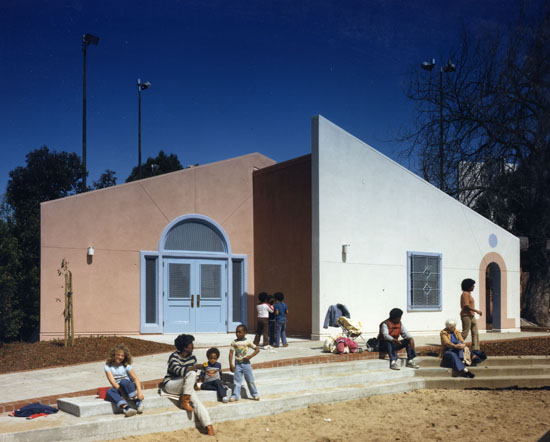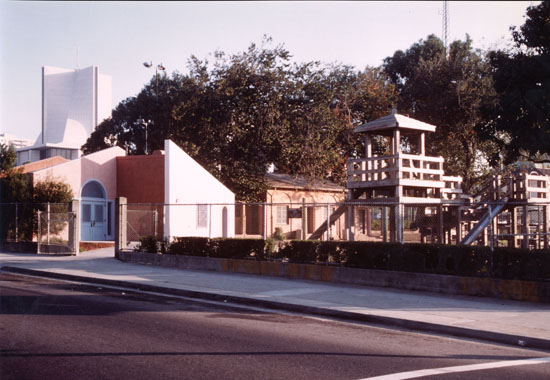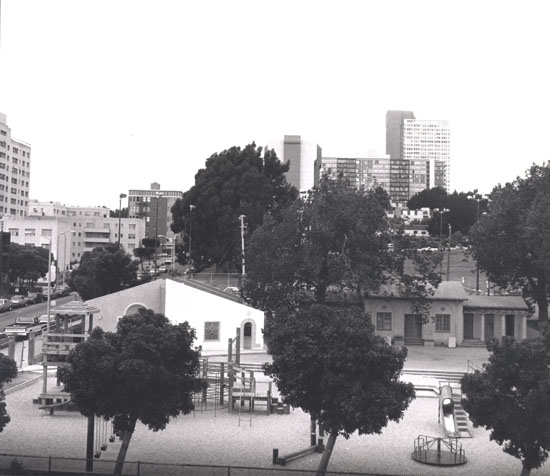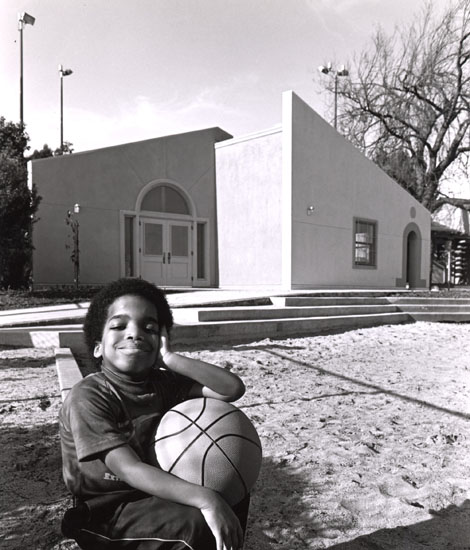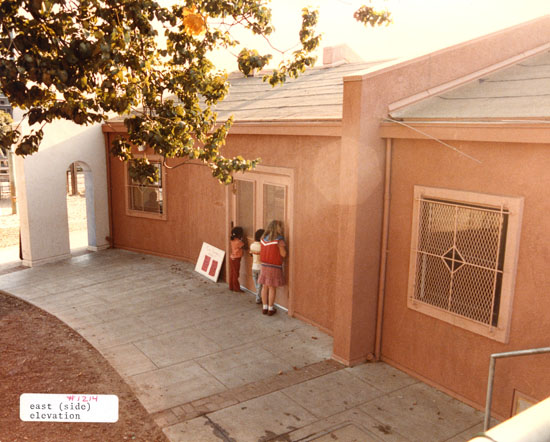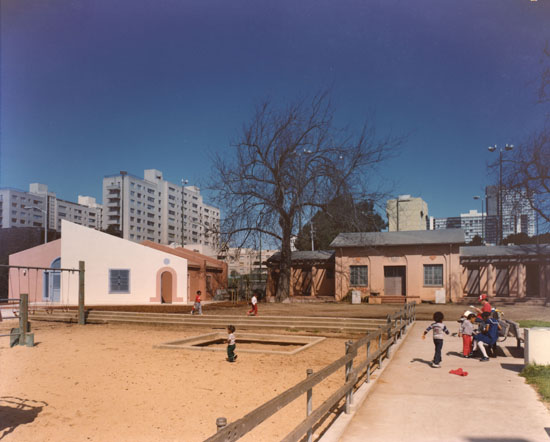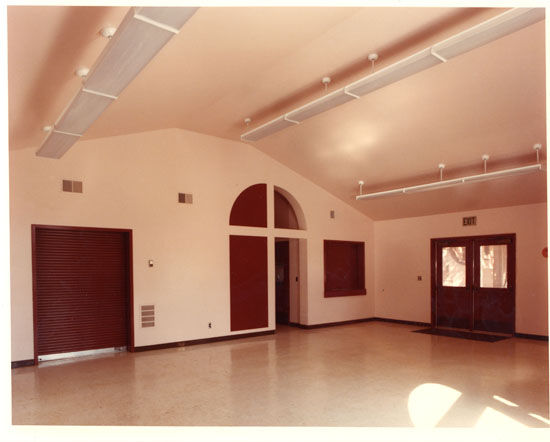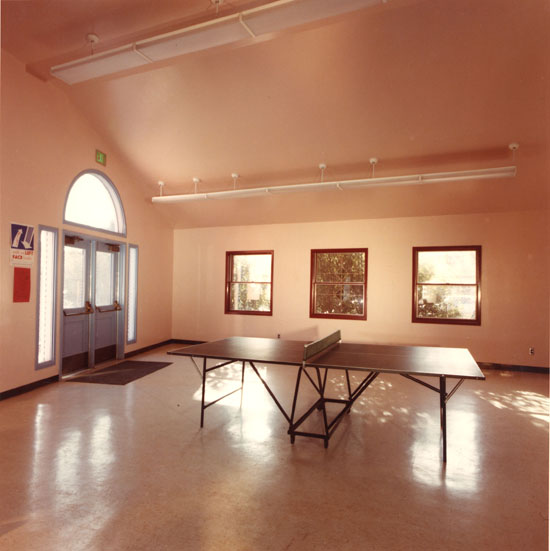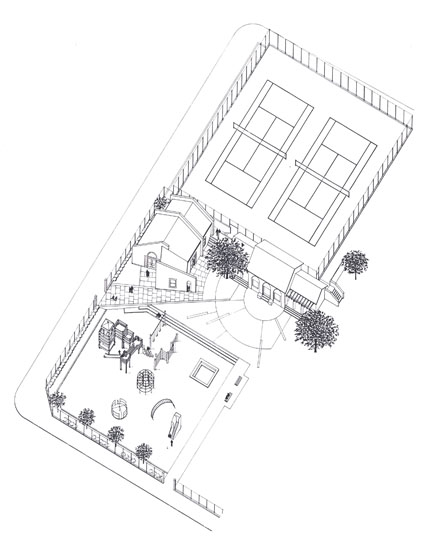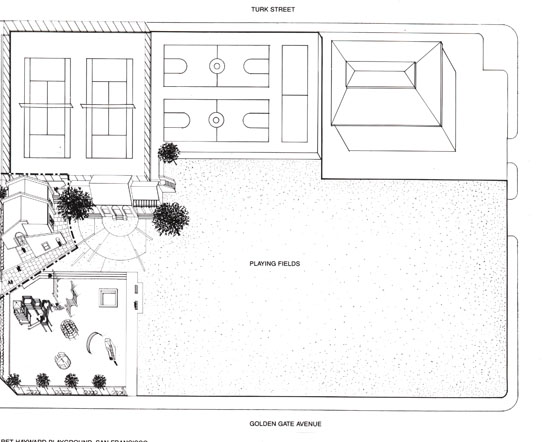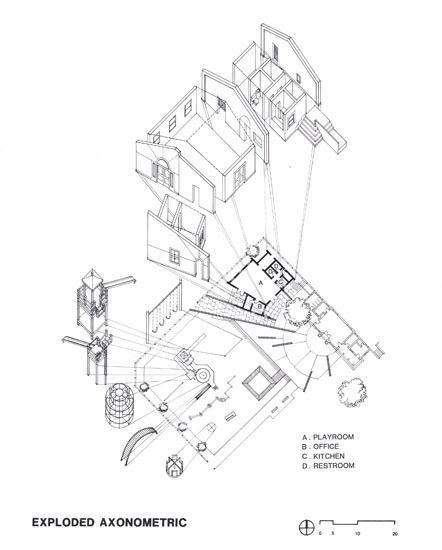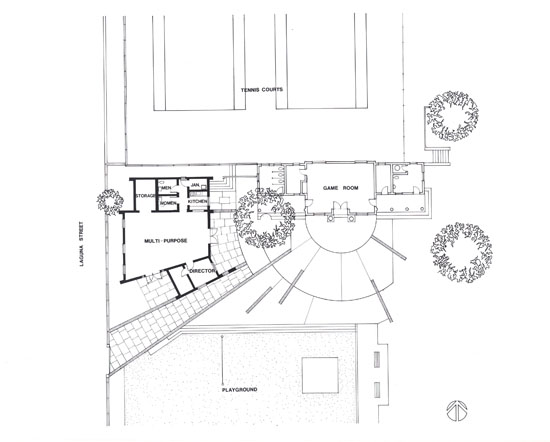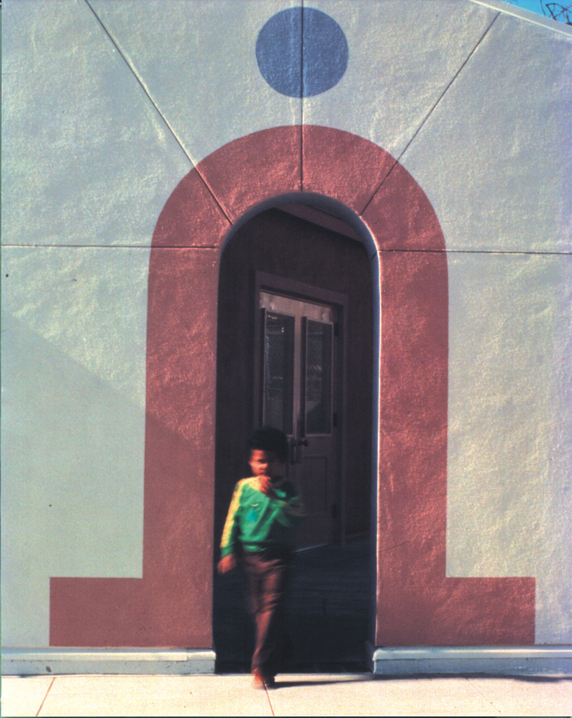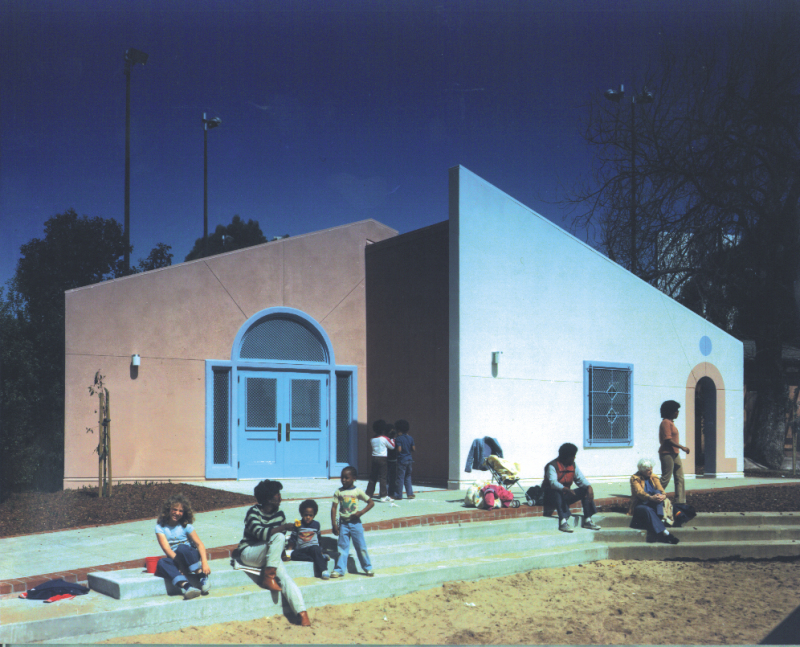Margaret Hayward Park Playground Building
- Subject:
- Building Government
- Project Number:
- 0716
- Client:
- San Francisco Park and Recreation Department
- Location:
- San Francisco, California
- Project Name:
- Margaret Hayward Park Playground Building
In 1978, Willis and Associates, Inc. (Willis) was chosen to design a small, one-room building with kitchen in San Francisco’s Margaret S. Hayward, named in honor of the woman who pioneered the movement to create public playgrounds in San Francisco. The park, located at the corner of Turk and Gough streets, is approximately 265,000 square feet (two blocks) in size and offers both indoor and outdoor recreation facilities. Indoor spaces include spaces for indoor games; playing fields outdoors for football, baseball and soccer; office space, storage areas; a small young child’s play area; and related amenities; and an emergency operations facility owned and operated by the Department of Emergency Management.
The City of San Francisco Parks and Recreation Department decided to add a tiny recreation building for very young children to an existing child’s play area within the park. The selected building site was tucked into a small corner of the large park, squeezed in between tennis courts and an existing children’s playground, equipped with swings, slides, and climbing constructions, as well as an existing storage building.
Envisioning it like a toy house, Willis designed the one-room, multi-purpose, indoor play area building, with rest rooms and a service kitchen for events. The American Institute of Architects California Council selected this building for an Award of Merit and the Pacific Coast Builders Conference with Builders Magazine awarded it both a Merit Award and a Grand Award.
The site location presented a challenge: how to design a building on the designated site and make it an integral part of an existing children’s playground? Working with project manager Gary Johnson, Willis designed a segmented building form, twisting the building’s axis so that walls are not parallel. Thus the building form “crawls out” of the cramped, unorthodox site like a caterpillar, to face the play area.
As a toy building, the design itself became an element for play. For example, the front exterior wall extends past a sidewall of the building, creating a stand-alone wing wall. Into the wall extension, an arched opening scaled to a child’s height is cut for their imaginative use. A make-believe stage was created by extending the building’s concrete floor past the front of the building to the sand of the play area, and by constructing wide steps that lead from the concrete floor to the playground below.
Children ages two to eight make this part of their imaginary adventures. The child-size opening in the stand-alone wall leading from “everywhere-to-everywhere,” as in Alice Through the Looking Glass, is useful for games of tag and hide and seek. The Margaret S. Hayward Park building was painted like a canvas to emphasize its toy-like character and inspire the imagination. The solution was ingenious: a building that abstracts elements of its older neighbor, and uses wall planes and the design of its central plaza to extend the geometry of the existing building. In the process, a marvelous stage set was created, with the plaza as the proscenium, and the play yard as the arena. Children gravitated to it instinctively, as a world apart from everyday existence.
The two-block long rectangular park served San Francisco’s Laguna and Golden Gate neighborhood, a moderate-income district.
- Parman, John. “Inner City Setting for Play.” Architecture California 1984: 20.
- Woodbridge, Sally B. and John M. Woodbridge. Architecture: San Francisco: The Guide. San Francisco: 101 Productions, 1982.
